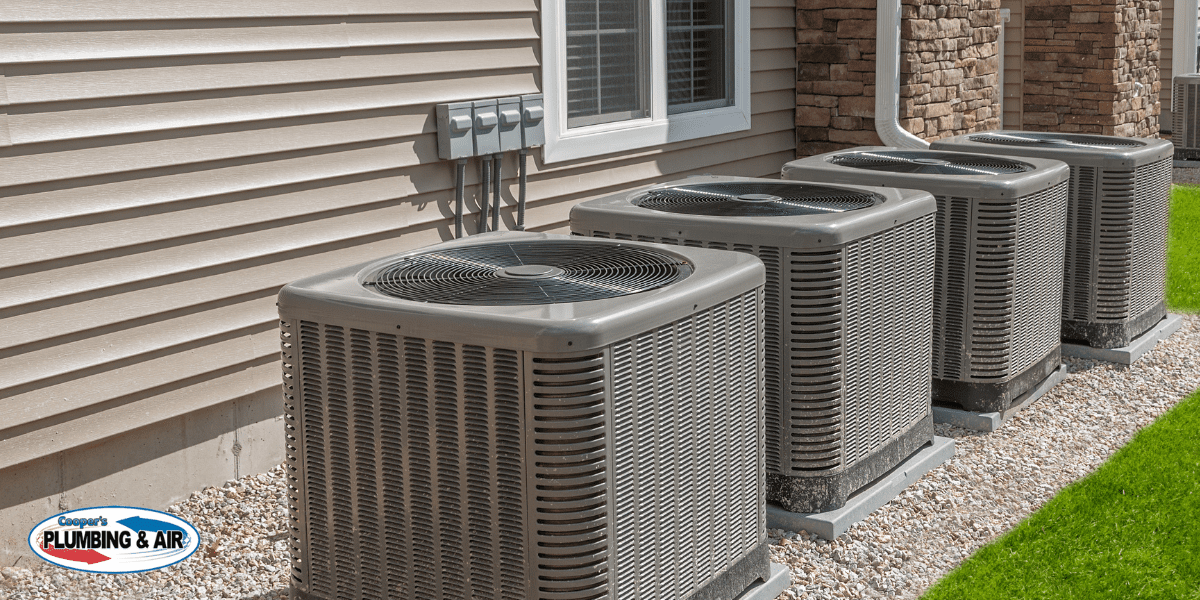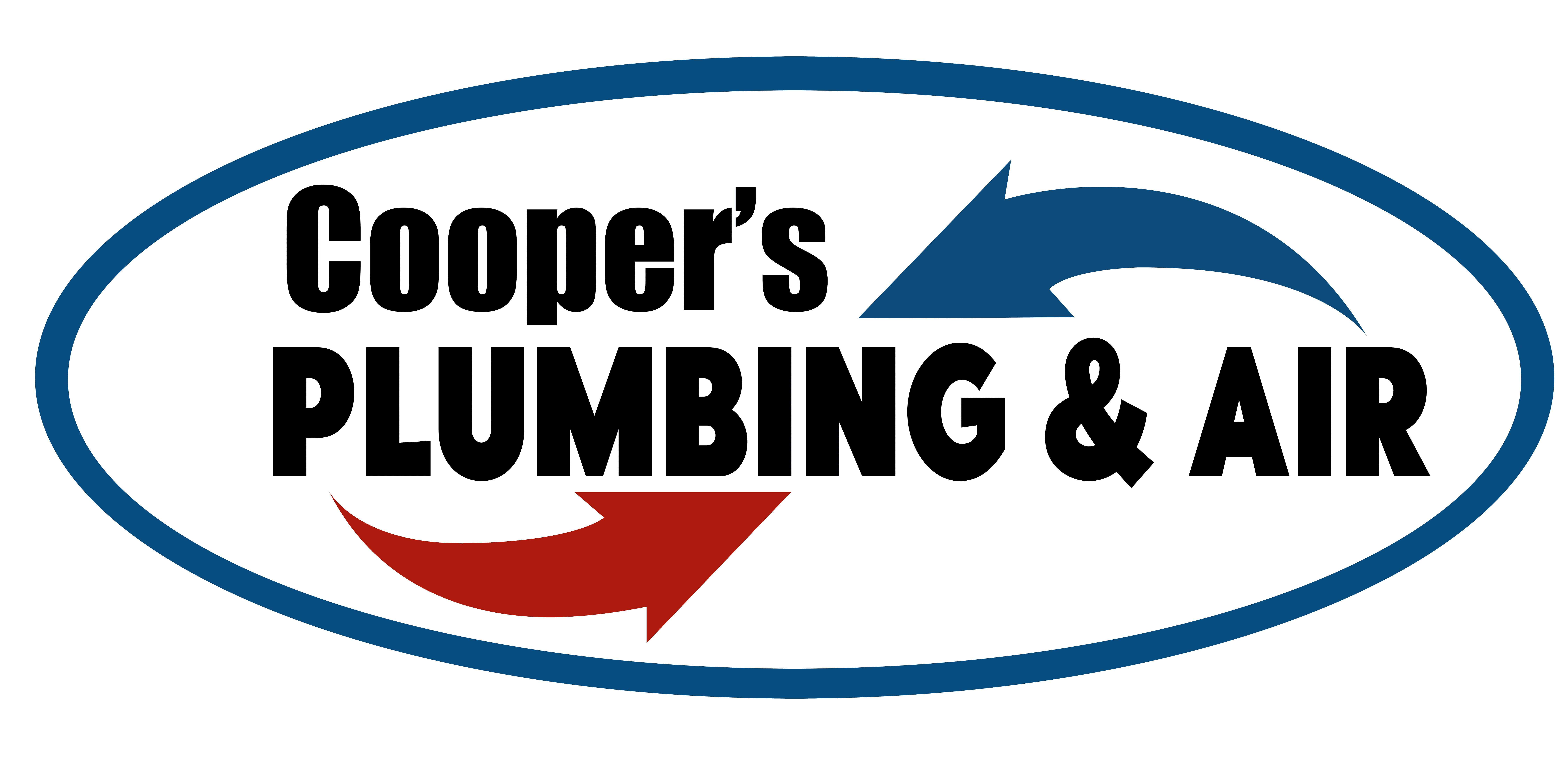
Have you ever wondered what a heat pump is and how it fits into a central air conditioning system? We are often asked this question so we wrote this blog post to help explain what a heat pump is and how it works. Keep reading to learn more….
Nobody wants their home to be too warm or cold. That’s why heat pumps are popular among homeowners looking to heat and cool their living spaces with maximum efficiency. However, many people aren’t sure how heat pumps work, as they’ve only ever used air conditioning systems.
Our heat pump installation experts at Cooper’s Plumbing & Air wrote this blog to explain how heat pump systems work, describing their inner components, the different types of heat pumps, and how heat pump operation varies depending on whether it is cooling or heating.
Understanding how heat pumps work may seem difficult, but it’s easier than you think!
How a Heat Pump Works: The Basics
Heat pumps are a home heating and cooling system with two parts: one outside and another inside. Unlike what you might expect, heat pumps can provide both hot and cool air.
Heat pumps operate by transferring heat from one place to another. Depending on the season, they either transfer heat from outdoors into your home or expel heat from your home.
These systems became popular in the 1940s as an easy-to-use, convenient way to regulate a home’s temperature. They’re renowned for being energy-efficient, as moving heat uses less energy than creating it.
A Heat Pump’s Different Components
Heat pump systems rely on many different parts to operate efficiently, including the following:
- Outdoor and indoor units: The outdoor and indoor units contain a coil and a fan. The fan blows the air where it needs to go while the coils either heat or cool air.
- Compressor: The compressor’s job is to move the refrigerant throughout the system.
- Refrigerant lines: Refrigerant lines connect the inside and outside portions of the heat pump AC unit, allowing for easy transfer of refrigerant used to cool air.
- Condenser and evaporator coils: These coils either cool or warm the air.
- Thermostatic expansion and reversing valves: Each of valve regulates and changes the refrigerant’s flow.
- Accumulator: The accumulator adjusts automatically depending on the season.
- Heat strips: Heat strips offer extra heating capacity for frigid days.
- Air ducts: Air ducts filter and process air, letting it flow through a home.
Each component is key in helping an HVAC heat pump unit function.
What Are the Two Types of Heat Pumps?
All heat pumps share the same function; their job is to transfer heat from place to place as needed, depending on the season. However, how heat pumps go about this task varies depending on the heat pump type.
There are two types of heat pumps: air-source and ground-source. Here are the differences between them:
Air-Source Heat Pumps
Most heat pumps are air-source heat pumps, meaning they blow air over refrigerant-filled coils that either warm or cool the air. These systems rely on an outdoor unit to transfer heat in and out of the home as needed. The compressor and reversing valves inside air-source heat pumps give them flexibility with regard to adding or removing heat.
Ground-Source Heat Pumps
Ground-source heat pumps fall into two categories: geothermal and water-source heat pumps. Geothermal pumps rely on heat from the earth, while water-source heat pumps draw heat from bodies of water. Both systems use underground pipes to extract heat from their respective supplies.
During the winter, ground-source heat pumps extract heat from the earth, while in summer, they disperse it into the earth. Ground-source heat pumps are effective solutions for homes located in areas conducive to their success.
How Can Heat Pumps Both Cool and Heat?
It’s important to remember that heat pumps do not create heat. They merely transfer already existing heat, redistributing it as needed. Heat pump operation also varies, depending on whether it is in cooling or heating mode.
Heat Pump Cooling Mode
The cooling process begins with liquid refrigerant flowing through the indoor coil. As air blows over the coils, the refrigerant absorbs any heat and cools the air, providing cool air that can circulate through a home’s ventilation system. As it absorbs this heat, the liquid refrigerant changes into a gas.
As the gaseous refrigerant moves to the compressor, it becomes pressurized. It then heats up, flowing through the system until it reaches the outdoor unit’s coil.
Once in the outdoor unit, a fan moves air from outside over the coils. This causes heat to transfer to the outside air, causing the refrigerant to cool and condense into a liquid. Then, the liquid refrigerant travels back through the system to the indoor unit’s expansion valve.
Finally, the expansion valve decreases the liquid refrigerant’s pressure, leading to a temperature decrease. With the refrigerant at a cool temperature, the cooling cycle will begin again.
Heat Pump Heating Mode
Heat pumps operate similarly in both heating and cooling modes. The only difference between the two modes is the role of the reversing valve.
During the heating process, the reversing valve reverses the refrigerant flow, changing the heating source to air from outdoors. This change also means that the indoor and outdoor coils switch roles. The outdoor coil is now the evaporator, while the indoor coil is the condenser.
Other than these changes, the specific process of transforming the refrigerant from gas to liquid and back again remains the same.
What’s the Difference Between Heat Pumps and AC Units?
Homeowners are frequently confused as to the difference between heat pumps and AC units. After all, don’t both units do the same thing? So why choose one over the other?
Unlike AC units, which can only cool spaces, heat pumps provide heating and cooling as needed. Both systems use similar processes involving refrigerants and coils to change air temperature. However, AC units cannot warm air.
Quality Heat Pump Services in Tallahassee
Need a heat pump in Tallahassee, FL? Cooper’s Plumbing and Air has you covered!
We provide expert heat pump installation and repair services to homeowners in the Tallahassee area. In addition, our experienced professionals will diagnose and treat any problems or concerns you have. Call us at 866-464-7132 to speak with one of our team members today!
